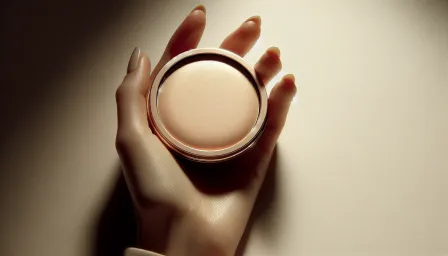Cutting-Edge Baldness Research and New Treatments: What You Need to Know

Discover the latest advancements in baldness research and new treatments. Stay informed about cutting-edge solutions that address hair loss problems effectively.
Hair loss, commonly referred to as baldness, affects millions of people worldwide and can have profound impacts on self-esteem and quality of life. While it has been a challenging issue for both patients and researchers for decades, recent advances in baldness research and new treatments are offering fresh hope. This article delves into the latest discoveries and innovations aimed at combating hair loss.
Understanding the Causes of Baldness
Baldness, or alopecia, has numerous potential causes, ranging from genetics to medical conditions and lifestyle factors. Understanding these underlying causes is crucial for developing effective treatments. Here are some of the primary reasons behind hair loss:
Genetic Factors
The most common form of hair loss, androgenetic alopecia (AGA), is hereditary. This condition affects both men and women and usually becomes more noticeable with age. Understanding the genetic basis of AGA has been imperative for researchers seeking targeted treatments.
Hormonal Changes
Hormonal imbalances, often resulting from conditions such as polycystic ovary syndrome (PCOS) or thyroid disorders, can induce hair loss. These imbalances can affect the hair growth cycle, resulting in thinning hair or bald patches.
Medical Conditions and Medications
Conditions like alopecia areata, lupus, and certain infections can cause hair loss. Additionally, medications for cancer, arthritis, depression, and hypertension, among others, can lead to temporary or permanent hair loss.
Lifestyle and Environmental Factors
Stress, poor diet, smoking, and exposure to pollutants can exacerbate hair loss. These factors can weaken hair follicles, leading to increased shedding and impaired hair growth.
Recent Developments in Baldness Research
In the last few years, researchers have made significant strides in understanding hair loss mechanisms and identifying potential new treatments. Here are some key areas of progress:
Stem Cell Research
Stem cells play a vital role in regenerating hair follicles, and recent studies have shown promising results in using stem cells to stimulate hair growth. Researchers are exploring ways to harness the power of stem cells to develop treatments that could regenerate or even create new hair follicles.
Platelet-Rich Plasma (PRP) Therapy
PRP therapy involves injecting a concentration of a patient's own platelets into the scalp. These platelets release growth factors that can stimulate hair follicle activity, promoting hair growth. Recent clinical trials have shown encouraging results for PRP in treating various types of hair loss.
JAK Inhibitors
Janus kinase (JAK) inhibitors, originally developed for treating autoimmune conditions, have shown promise in treating alopecia areata, an autoimmune form of hair loss. Clinical trials have demonstrated significant hair regrowth in patients using JAK inhibitors.
Genetic Editing and CRISPR
Advancements in genetic editing techniques such as CRISPR have opened new possibilities for treating genetically-driven hair loss. Researchers are investigating ways to modify specific genes associated with hair loss to promote hair growth and prevent further thinning.
New and Emerging Treatments for Baldness
With ongoing research and technological advancements, several new treatments for baldness are being developed. Here are some of the most promising ones:
Hair Cloning
One of the most exciting prospects in the field of hair restoration is hair cloning. This technique involves cloning healthy hair follicles and implanting them into areas affected by baldness. While still in the experimental stages, hair cloning holds the potential for providing permanent solutions to hair loss.
Laser Therapy
Low-level laser therapy (LLLT) uses red light wavelengths to stimulate hair follicles and promote hair growth. This non-invasive treatment has shown effectiveness in increasing hair density and thickness in clinical studies. It is available in various forms, including laser caps and helmets.
Topical Solutions and Medications
Researchers are continually developing and improving topical solutions and medications to combat hair loss. New formulations of minoxidil, anti-androgen treatments, and growth factor serums aim to enhance hair regrowth and minimize side effects.
Scalp Micro-Pigmentation
For individuals seeking a cosmetic solution, scalp micro-pigmentation (SMP) offers a non-surgical option. SMP involves tattooing tiny pigment deposits on the scalp to mimic the appearance of hair follicles, giving the illusion of a fuller head of hair.
How to Choose the Right Treatment
With numerous options now available, selecting the appropriate treatment can be overwhelming. Here are some factors to consider:
Consult a Specialist
It's essential to consult a dermatologist or hair loss specialist to diagnose the underlying cause of your hair loss and recommend suitable treatments based on your specific condition.
Research and Reviews
Investigate the latest treatments, read reviews, and look for clinical evidence supporting their effectiveness. This will help you make an informed decision and avoid potentially ineffective solutions.
Personal Goals and Preferences
Consider your personal goals, preferences, and budget when choosing a treatment. Some individuals may prefer non-invasive methods, while others might opt for surgical solutions.
Combination Approaches
Combining multiple treatments may yield better results. For instance, pairing PRP therapy with topical solutions or laser therapy can enhance the overall effectiveness of the treatments.
Conclusion
The field of baldness research and new treatments is rapidly evolving, offering hope for individuals affected by hair loss. From stem cell therapy to genetic editing, the advancements are paving the way for more effective and personalized solutions. By staying informed and consulting with specialists, you can choose the most suitable treatments to address your hair loss concerns and regain confidence.



























